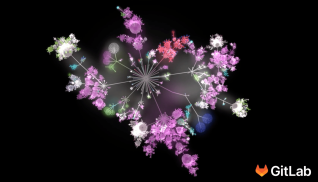As more organizations adopt open source software, DevOps and cloud computing, teams are moving towards a hybrid approach to application development and deployments. This is a particular challenge for siloed mainframe development teams that typically work within their own development tools – and those tools are are not the same ones used by their distributed developer counterparts. These disparate toolsets are not integrated between build, package, test, and deploy steps. GitLab aims to provide a unified enterprise-wide DevOps platform with enhanced support for IBM z/OS® applications. Here are three critical areas to focus on that can help bridge the gap between mainframe and "modern" DevOps development.
Common workflows for hybrid environments
DevOps is naturally aligned to Agile processes with its focus on continuous improvements, freqent releases and adherence to business objectives. As organizations adopt a hybrid infrastructure to meet their needs, it becomes extremely important to have a common workflow (and tools!) for continuous software development. The development workflow should be the same whether you are building a cloud native container application for Red Hat OpenShift or whether you are refactoring COBOL applications on IBM Z. Ideally, in both scenarios, the same source code management, along with Git commit and merge-request workflows should be used, regardless of the type of application code or where it is deployed. The advantage of using the same software development lifecycle methodology and tools allows an organization to drive an enterprise-wide DevOps strategy. Additionally, this helps organizations to attract mainframe developers, allowing them to move between mainframe and cloud-based application development projects, enhancing developer job satisfaction, growth and retention.
Security and compliance vs speed
In an enterprise-wide mission critical application where security and compliance are paramount, a deployment cadence of once a quarter is considered satisfactory, but in a consumer-facing containerized application (using microservices), multiple deployments can be easily achieved in a single day. Release speeds can differ but software security isn't negotiable. Every organization needs to ensure security by making sure best practices are followed for all application development processes. Ultimately, the ideal situation for every organization would be shortened development cycle times, while at the same time enabling developers to identify any security issues ahead of time. Rather than integrating security tools into the complex DevOps toolchain, a single application for the entire software development lifecycle can improve your security risk posture, simplify compliance/audit, and accelerate software development. With DevSecOps methodologies, security testing becomes an integral part of the software development lifecycle (SDLC) eliminating friction between siloed development and security teams, and dramatically improving code quality and deployment cycle times.
Increase collaboration and automation
DevOps practices and elastic cloud computing resources helpdevelopers become more self-sufficient as they deploy their applications at scale. They can request identical compute resources on every new release of their application. Automating the deployment steps through a CI/CD pipeline makes rolling out the new version of an application more efficient and less prone to errors. While CI/CD tooling increases automation for software inspection, development and delivery, resilient systems like IBM Z or RedHat OpenShift Container Platform have their own built-in automation to address application testing, reliability and availability.
Most organizations have a security team that looks at the risk posture of an application. This can range from high availability of applications for business continuity reasons, to a vulnerability in a software library. In most cases, the security team is much smaller than the application development teams and uses different tools to analyze risks. This creates an impediment for organizations to scale and applications to scale in production. Using the same workflow and shared data model between security and development teams allows knowledge sharing and helps break down team silos. For example, a Red Hat OpenShift application developer can create a security Issue in their GitLab Ultimate DevOps Platform, and the security team can comment on that same issue and analyze the risk.
Cloud computing and its elasticity offers advantages for certain applications and use cases while on-premise systems like IBM Z offer advantages for high transaction applications and use cases. Red Hat Openshift offers a cloud native approach to application deployments. GitLab Ultimate integrates with container platforms as well as IBM Z environments. This gives customers the flexibility to deploy their application in their desired environment while helping increase automation and Agile practices in their organization.
To learn more
- Visit GitLab Ultimate for IBM z/OS
- Hear GitLab and IBM experts discuss the benefits of integrating GitLab into your DevOps solution -Automate your Z DevOps CI/CD pipeline with GitLab
- Learn about the management of mainframe apps lifecycle withIBM Z DevOps and GitLab.
- Take advantage of theDevOps Acceleration Program to partner with IBM for a successful transformation



